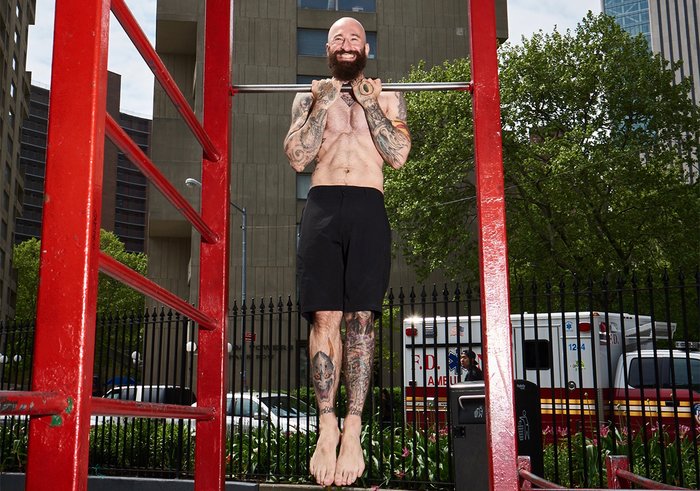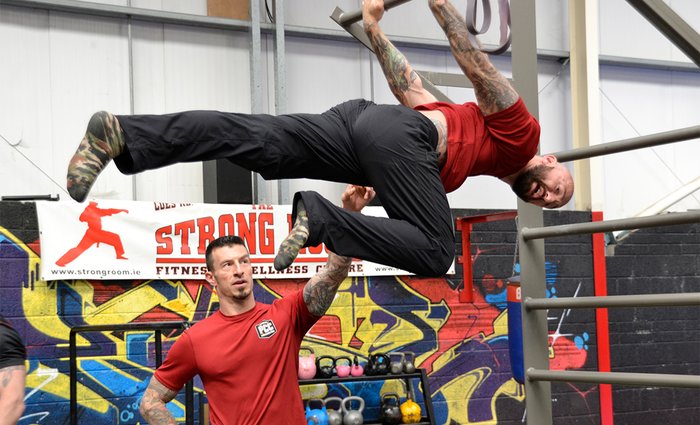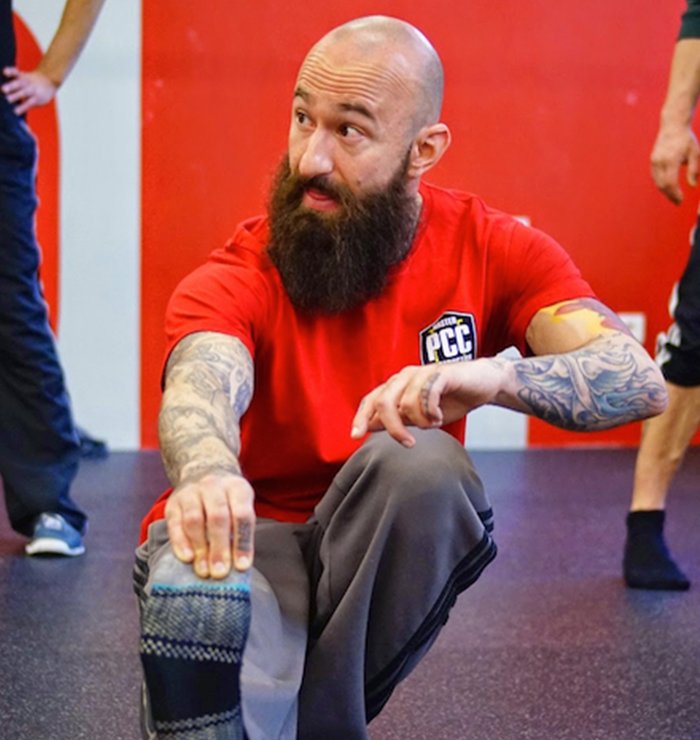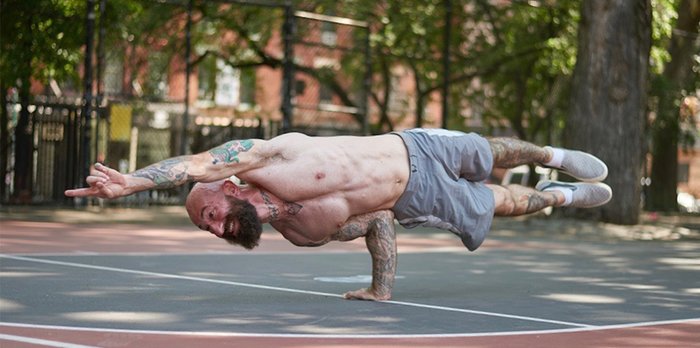If you know me, you know I love to train with nothing but my own body weight. There are just so many ways to progress calisthenics exercises that I’ve got a lifetime’s worth of challenges without even worrying about external weights.
I understand that not everyone feels that way, however. Plenty of people love the feeling of slinging iron—and I totally get that! But as someone who coaches people day in and day out, I also think every lifter can borrow one important idea from bodyweight training: Namely, that you can—and should—modify exercises in more ways than just adding or subtracting weight from the bar.
Regardless of your preferred modality, you can apply the following principles to modify any exercise to suit your needs, goals, and experience level. Like the old saying goes, “Give a person a fish and they’ll eat one meal, but teach that person to fish and they’ll eat for a lifetime.”
Though I teach these concepts at my bodyweight training seminars, the following truths are so universal that all of them can be applied to weight-training exercises as well.
Let’s go fishing!
1. Tempo
By simply decreasing your movement speed, you can make virtually any exercise exponentially harder. Bodybuilders have been saying for a long time that time under tension matters as much as—if not more than—the amount of resistance moved, and going slower makes your muscles work harder and forces them to grow.
This technique works great for calisthenics basics like squats and push-ups, but it’s especially helpful in the case of exercises like pull-ups and toes-to-bar leg raises, where it’s very common for people to use momentum to complete their reps. In fact, most people aren’t even aware of how much they’re relying on momentum until they attempt to perform these exercises slowly.

Decreasing the speed of your movements is extremely effective in weight training, as well. This doesn’t mean you have to go super-slow—that’s something else entirely. What I’m talking about is simply being in full control of every centimeter of every rep, without the use of the slightest bit of momentum. Depending on the exercise, this may take anywhere from 3-5 seconds per rep.
Give it a shot, but be prepared to use less weight than you’re used to lifting!
2. Range of Motion
I’m always psyched when I meet a new client who wants me to help them get their first chin-up. If they already have enough grip strength to hang from the bar, one of the first things we’ll work on is the negative chin-up.
By just lowering down from the top position, they’re able to build strength and begin to get a feel for the movement pattern, without having to concern themselves with the concentric phase. This is one example of using a limited range of motion to regress an exercise, but there are many ways to apply this principle.
Another example would be when working with a client who’s unable to go all the way down on a squat. In this instance I might have the client start out with a half squat. Over time we will work toward increasing their mobility until they can perform a full range of motion with their hamstrings touching their calves in the bottom position.

Conversely, this concept can be used to add difficulty to an exercise by increasing the range of motion instead. For example, try doing a chin-up where you bring the bar all the way to your collar bones, as opposed to stopping at your chin.
This same principle can be applied in weight training. After all, why is a clean and press so much more work than a deadlift? It might have something to do with the fact that you’re moving the weight three times as far!
Increase your range of motion, and you’ll almost always increase the difficulty of your exercise along the way.
3. Leverage and Body Length
Everyone knows that a push-up on your knees is less difficult than one performed on your toes—but why is this so? The answer is simple: Leverage. The longer you make your body, the farther your arms wind up from your fulcrum point, creating more torque for your muscles to resist.
Though the push-up might be the most obvious way to conceptualize this idea, it can be applied to many advanced calisthenics moves, from the back lever to the human flag—both of which are best learned first with the legs in a tucked position. From there, you can progress to a single-leg tuck and then a straddle leg position, before finally performing either move with both legs together and fully extended. The more you straighten your legs, the longer your body gets, and the harder these moves become.

This one can be trickier to conceptualize in the weight room, but here’s one way to think of it: Compare a fly or pull-over with your arms bent to one where the elbows are fully straightened. It’s a lot less difficult with your arms bent, isn’t it? This is due to the fact that straightening your arms places the weight farther away from your body, increasing the amount of torque on your muscles. The dumbbell lateral raise is another example of this principle applied to a classic weight-training exercise. Once again, the straighter and farther away you move your arms from your body, the harder the exercise becomes.
4. Technical Progression
What’s the next step after you can do a pistol squat? How about simply doing a better pistol squat? Nobody’s first rep of anything—or with any PR weight—is their best, and just because you’ve managed to do a few reps of a new exercise, doesn’t mean you are necessarily ready to try something more difficult or heavier.
Simply working on improving your technique can be a form of progression. This is true for advanced calisthenics moves, but it applies when lifting weights as well. If you focus on performing every rep you do with rock-solid technique, you will not need to lift nearly as much weight in order to tax your muscles to the same degree. Plus, you will reinforce good movement mechanics across the board.

Heavier does not necessarily equal better! But if you focus on better, you can definitely make heavier feel easier and cleaner—and that’s solid progress.
No matter your preferred modality, you can use these universal principles to adapt and modify any exercise in your routine. In that regard, calisthenics and weight training actually have a great deal in common.
As for me, I’ve got some weight to lift…my own!
Like getting maximum results with minimal equipment? Check out Total Fitness with Andy Speer, only on Bodybuilding.com All Access!
